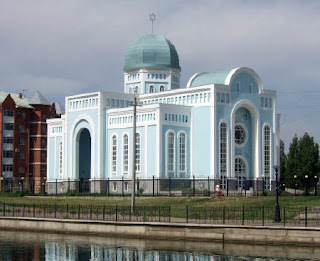The Soviet Union was a state comprising fifteen communist republics which existed from 1922 until its dissolution into a series of separate nation states in 1991. Of these fifteen republics, six had a Muslim majority, Azerbaijan, Kazakhstan, Kirghizia, Tajikistan, Turkmenistan, and Uzbekistan. There was also a large Muslim presence in the Volga-Ural region and most of the population of North Caucasus of Russian Federation were Muslims and a large number of Tatar Muslims lived in Siberia and other regions.
The Bolsheviks wanted to include as much as possible of the former Russian Empire within the Soviet Union. This meant they were faced with a number of contradictions as they set out to establish the Soviet Union in regions with strong Islamic influences.
Since the early 1920s, the Soviet regime, fearful of a pan-Islamic movement, sought to divide Soviet Muslims into smaller, separate entities. This separation was accomplished by creating six separate Muslim republics and by fostering the development of a separate culture and language in each of them. Although actively encouraging atheism, Soviet authorities permitted limited religious activity in all the Muslim republics.
Mosques functioned in most large cities of the Central Asian republics and the Azerbaijan Republic; however, their number decreased from 25,000 in 1917 to 500 in the 1970s. In 1989, as part of the general relaxation of restrictions on religions, some additional Muslim religious associations were registered, and some of the mosques that had been closed by the government were returned to Muslim communities. The government also announced plans to permit training of limited numbers of Muslim religious leaders in courses of two- and five-year duration in Ufa and Baku, respectively.









No comments:
Post a Comment